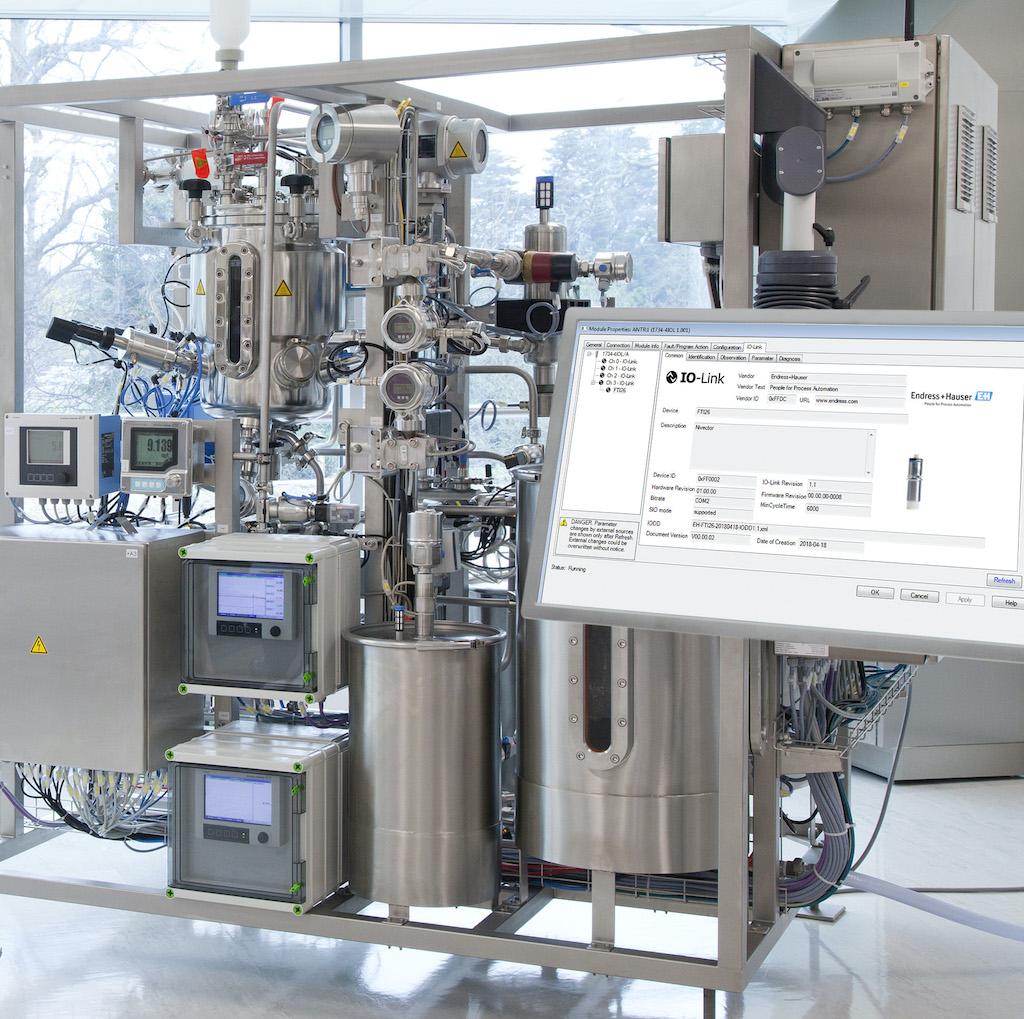IO-Link is enjoying increasing popularity, with demand for the communications standard growing rapidly, especially in the food & beverage industry. The fieldbus-independent technology for point-to-point communication is easy to use and provides a cost-effective way to digitalize industrial plants. Endress+Hauser offers their comments on the growth they’re seeing with the technology.
IO-Link is regarded as an established standard for measurement devices with basic functionality, offering advantages such as data transparency and additional control through digital technology. Integrating IO-Link-capable sensors and actuators is especially popular with suppliers of machines or skids for the food & beverage industry. Particularly for utilities, devices with basic functionality are well suited; instruments with a rich set of different functionalities would unnecessarily increase complexity and costs.
Digitalization of the Last Mile
Smart Ethernet devices like valve islands, remote IOs, recorders, liquid analyzers or flow measurement devices are digitalized with Industrial Ethernet, e.g. PROFINET. Basic devices also become digitally accessible with IO-Link: This makes offline parametrization, data transparency and plug-and-produce device exchange available for all devices.
Analog Signals and Digital Communication
The majority of IO-Link sensors can be optionally operated in analog mode (4–20mA) with simple configuration changes to the instrument, thus allowing production workflows to remain in place. If extra information such as diagnostic and service data is required, in addition to the actual process parameters, an installed IO-Link-capable instrument can be simply switched to a digital signal.
A Simple Avenue Towards Industry 4.0

“Although IO-Link is not the most powerful communications standard for process engineering, the technology is cost-effective and harbors tremendous potential for the digitalization of process plants,” says Oliver Hansert from Endress+Hauser Digital Solutions. Instruments with IO-Link interfaces support the acyclic transmission of helpful metadata to ensure stable and efficient production. Furthermore, the smart sensor profile is designed for simple engineering, which reduces the effort required by plant operators to integrate sensors into their systems.
Key Benefits for Engineers
- Easy and efficient integration, e.g. by using standardized function blocks.
- Ideal fit of Industrial Ethernet high-end devices accompanied by basic IO-Link devices.
- Reduced variety of plugs and cabling, substitution of
DI/DO/PNP/NPN/Pulse/0…10 V / 4…20 mA signals. - Reduced variety of sensors, e.g. configuration of switching points with IO-Link.
- Fast commissioning and start-up, e.g. by standardized cabling and
automated parameter setting.
Key Benefits for Operators and Maintenance Personnel
- Higher precision due to digital signal transmission.
- Remote access and parameterization of IO-Link devices.
- Availability of diagnostics with cause and remedy, including cable break detection.
- Easy device exchange through automated parameter data storage and download.
New Additions to the IO-Link Portfolio
Endress+Hauser offers a comprehensive product portfolio of IO-Link-capable instruments for all relevant process parameters. The company recently introduced the Smartec CLD18 compact conductivity sensor, IO-Link versions of the PMP51, PMP55 and PMC51 pressure transmitters, and the Deltapilot FMB50 level transmitter. With these new additions to the IO-Link portfolio, customers can exploit the benefits of digitalization in a cost-efficient manner.
Further information about IO-Link is available at: https://eh.digital/3o918U8
